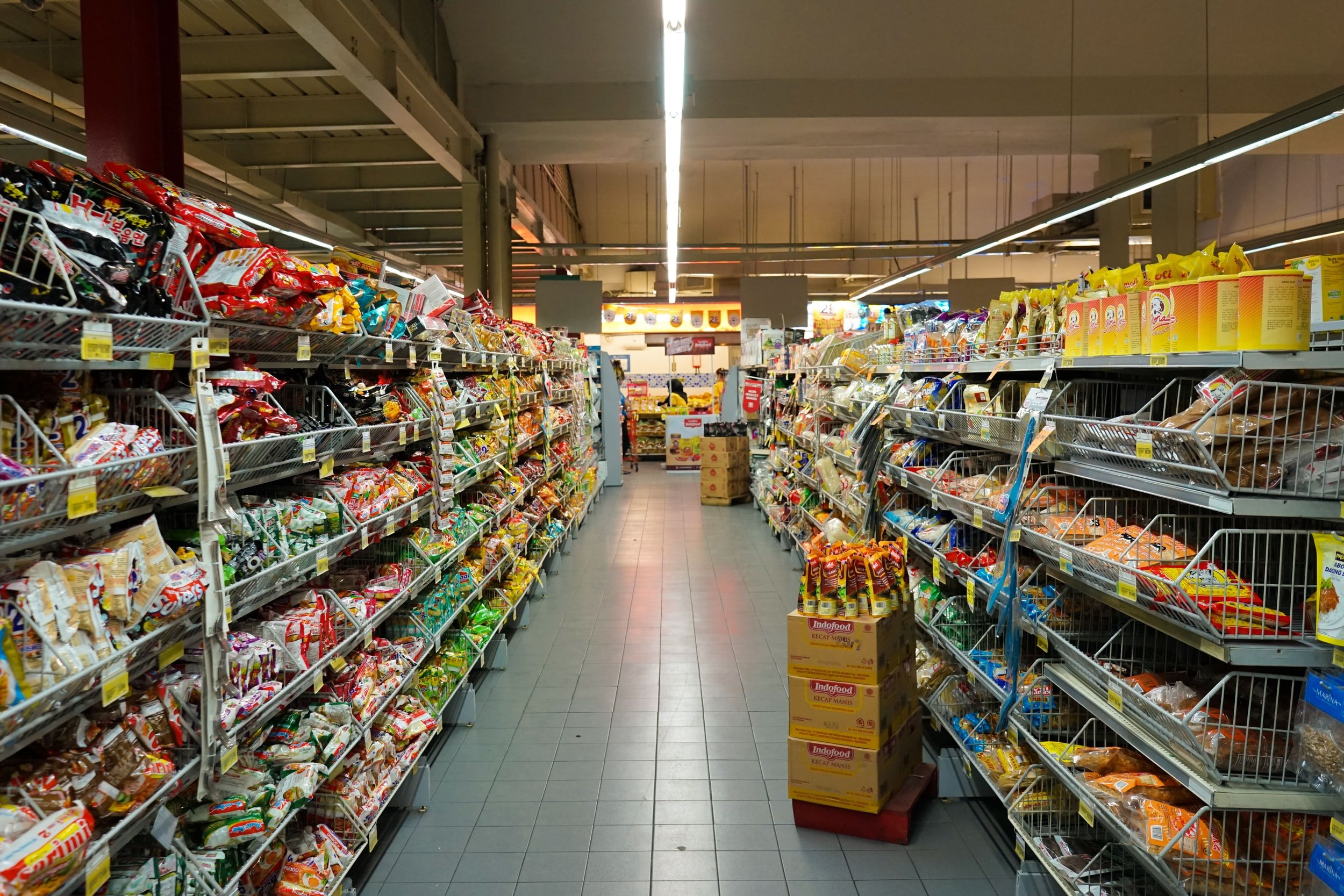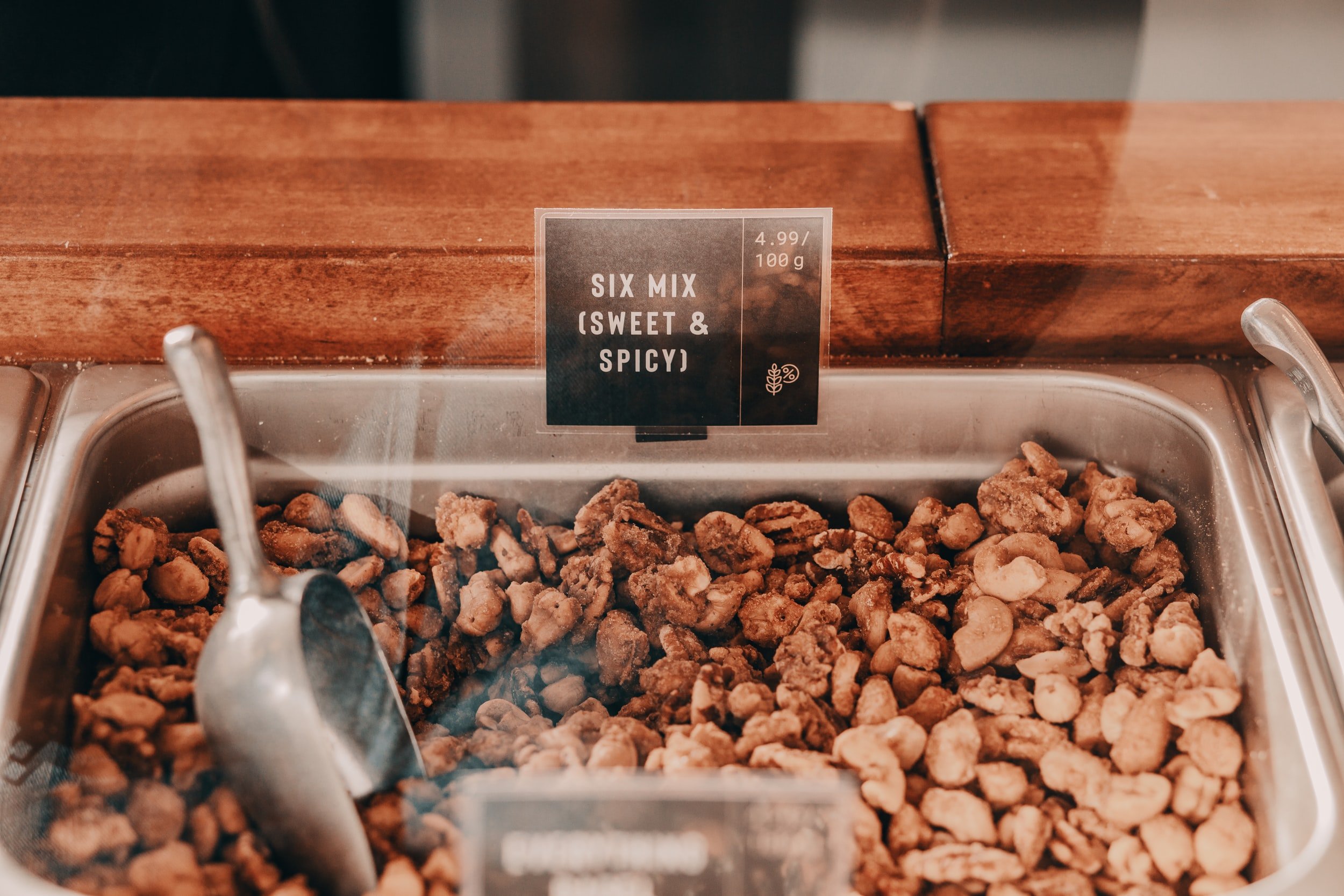How to Grocery Shop Sustainably: 10 Practical Tips to Know
There was once a time when you had to grow (and raise) your own food. And for thousands of years, it was a matter of life or death—because there weren’t grocery stores conveniently located ten minutes away like there are today.
The first grocer is estimated to have come around in the 14th century. They sold dry goods in bulk like spices, peppers, sugar, and (later) cocoa, tea, and coffee.
Fast forward to 1916 and the first self-service grocery store came into existence. Piggly Wiggly—created by Clarence Saunders—opened its doors to the public in Memphis, Tennessee (1). This revolutionary concept introduced shopping baskets, aisles, and checkout lanes to the scene. (You once had to give your grocery list to the clerk and they would collect and bag up your goods.)
What began as an innovative idea has now turned into a wasteful one, with 31% (or 133 billion pounds) of food being sent to a landfill every year, in America alone (2).
Wondering how you can cut the waste when it comes to grocery shopping? Keep reading…
10 Tips to Become a Zero Waste Grocery Shopper
The first three tips are small investments—that you’ll have for years. And the remainder are things that you can do to keep your grocery shopping experience as zero waste as possible.
1. Invest In Reusable Grocery Bags
This was the first zero-waste swap I made (probably because when I moved from Kansas to California, I was stunned to see them charging 10 cents per grocery bag). No way was I about to spend that type of money as a college kid! So, I quickly adapted—keeping reusable grocery bags in my trunk and bringing them with me whenever I went into a grocery store.
2. Invest in Reusable Produce Bags
This swap came six years later for me…and it’s perhaps the best swap I ever made.
You know how produce aisles are lined with those rolls of green plastic bags for you to put your fruits and vegetables in? Well, there’s a perfectly green alternative: Reusable produce bags. Bring these with you every time you head to the grocery store so you don’t have to use those single-use plastic produce bags.
I got mine from Sprouts for $2.99 (for a pack of three). Note: Not all Sprouts carry these in stores. If your local Sprouts doesn’t carry them, purchase them online. I bought two packs and that has been the perfect amount for me.
3. Invest in Reusable Grain Bags
Like reusable produce bags, but for grains. I got mine from Sprouts for .99 cents a piece (they’ll be in the bulk grains section).
See Tip #7 to learn how to use them.
4. Make a Grocery List
Make a list—and stick to the list. Not only will this cut down on packaging, but it will also cut down your grocery bill, too.
Why?
Because you’ll only be buying things you need! Our ancestors lived by this principle; adopting the mindset, “Take only what you need and use everything you take.”
EcoTip: Use the “Reminders” app on your iPhone, make a list and title it “Grocery List”, type in what grocery items you need, and check them off as you put them in your grocery cart.
5. Buy Your Fruits & Veggies without Packaging
I’ll admit, I used to buy ALL of my vegetables pre-packaged. I was nowhere near “plastic conscious'' at the time, so I’d buy my spinach, carrots, cole slaw, romaine lettuce, asparagus, you name it…all wrapped in plastic packaging.
To purchase produce zero-waste, use your reusable produce bag and reach for loose fruits and vegetables. Berries are an exception since they typically come in plastic containers. Don’t feel guilty for this, though. Remember the 80/20 rule—80% zero waste, 20% trying your best. Every small action counts.
6. Buy Your Herbs in Bulk
Did you know that you can buy your herbs and spices in bulk?
I personally go to Sprouts and buy my herbs in bulk there. To see where zero-waste grocery stores are near you, head here and click the state you live in.
7. Buy Your Grains in Bulk
Courtesy of Sprouts Farmers Market.
To avoid buying essentials like flour, rice, and beans in a plastic bag, buy your grains in bulk from food bins. Here’s a list of items that you can buy in bulk at Sprouts:
Flours (almond, all-purpose, whole-grain)
Rolled Oats
Rice
Beans
Quinoa
Nuts and Seeds (of all kinds)
Dried Fruits
Granolas
Trail Mix
Candies and Chocolate
Roasted Coffee Beans
And more…
Simply put what you need in your reusable grains bag, take a picture of the PLU number, and show it to the cashier upon purchase. They’ll weigh it and calculate the amount for you. If you’re bringing a jar to stock up on grains, be sure to have the tare weight (AKA the official weight of the empty container) handy.
8. Stay Away from the Aisles
If you walk into any grocery store, you’ll notice the same format: Fresh foods are typically at the forefront. That’s where your fruits, veggies, and herbs will be. Then there’s typically a refrigerator that wraps around the store—this contains your eggs, milk, butter, cheeses, yogurts…AKA your perishable items. And then there’s everything in between, AKA the 25 different aisles that contain everything from packaged cereals and cookies to spaghetti sauce and Doritos.
So this is where Tip #4 comes in handy: Your grocery list.
You don’t want those 25 aisles to suck you into a black hole. You want to stay vigilant in what you came to the grocery store for. There’s no need for those Oreos in plastic packaging, or those BBQ Lays potato chips, or even that brownie mix that comes in a plastic bag inside of a cardboard box (make your own brownies from scratch!).
9. Choose Your Snacks (& Other Must-Haves) Wisely
Can’t resist the chocolate bar? Or those Siete tortilla chips?
Don’t beat yourself up. When it comes to zero-waste grocery shopping, there will likely be an 80/20 rule. Meaning that 80% of the things you buy are, in fact, zero waste. While the remaining 20% are not quite zero waste.
To kaizen your grocery shopping routine, look for snacks that don’t have plastic packaging. Or brands that use 100% recycled materials. These are small improvements that will do the earth some good.
10. Go to a Refill Shop When You Can
Refill shops have become one of my favorite places to shop. Refill shops vary from store to store—some offer toiletries like shampoo, body wash, and toothpaste as well as household cleaning products like an all-purpose cleaner, window cleaner, and laundry detergent. While other refill shops offer kitchen essentials like olive oil, grains, and herbs and spices.
To find a refill shop near you, head to Litterless and click on your state.
The Bottom Line
With grocery shopping on the to-do list of millions across the globe, it’s important that we evaluate how we’re grocery shopping.
Are we avoiding packaging and plastic where possible? Are we buying items in bulk when we can? Are we buying only the amount of perishable items that we need—so that we can avoid them going to waste?
By asking these simple questions as you grocery shop each week, you’re effectively cutting the obscene amount of waste generated by humans each year.
Caroline Nicks
On a mission to leave places better than she found them, Caroline spends her time with her hubs and parti poodle researching how to live a less wasteful life, picking up trash on her beach walks, and tending to her 32 houseplants.












